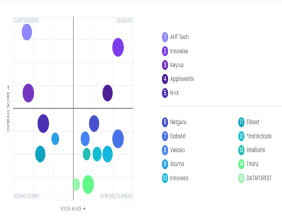Highlights
- Steelmakers in China face continued pressure from declining demand.
- Domestic consumption predicted to plummet drastically by 2030.
- More production cuts expected to stabilize the sector's overcapacity.
China's steel industry is facing a difficult period as demand continues to slump and production levels exceed what the market can absorb. Despite the overall steel output dipping slightly in 2024, the country has managed to maintain production of over 1 billion tonnes of steel for the fifth consecutive year. However, as the domestic demand falters, deeper production cuts are likely on the horizon in order to realign with the weakening demand.
China's steel consumption, which surged in previous years, is now slowing down due to a combination of factors. One of the main reasons for this is the continued downturn in China’s property market, which traditionally has been a major driver for steel demand. The ongoing crisis in the real estate sector is impacting the construction industry, leading to a significant reduction in the steel used for buildings and infrastructure projects.
At the same time, the Chinese government has been focusing on shifting the country's economic priorities towards greener technologies and higher-tech sectors. The move away from traditional heavy industries, such as steel production, is reducing steel's role in China’s overall economic model. With China targeting more sustainable economic growth and diversifying its industrial base, the steel industry faces a grim outlook over the next several years.
According to forecasts from Bloomberg Intelligence, China’s steel consumption could fall below 800 million tonnes by 2030 under the base-case scenario, representing a major dip from the levels seen just a few years ago. In the worst-case scenario, the numbers could be even more alarming, with consumption potentially shrinking to just 525 million tonnes by the end of the decade. Such a dramatic reduction could mean more operational challenges for steelmakers, especially those that are already operating below profitability.
Among the companies operating within the sector, players such as (ASX:RIO) and (SSE:600219) will likely face more difficulty due to these structural shifts in the economy. The continued decline in demand, coupled with the oversupply in production, makes it increasingly difficult for steel manufacturers to maintain profitability.
While China’s steel production remains a significant factor in global markets, the industry is bracing for more cuts as overcapacity and a lack of demand continue to disrupt the sector’s balance. Steelmakers are likely to feel the strain as the government’s broader economic shifts make the industry less central to China’s future growth path.




